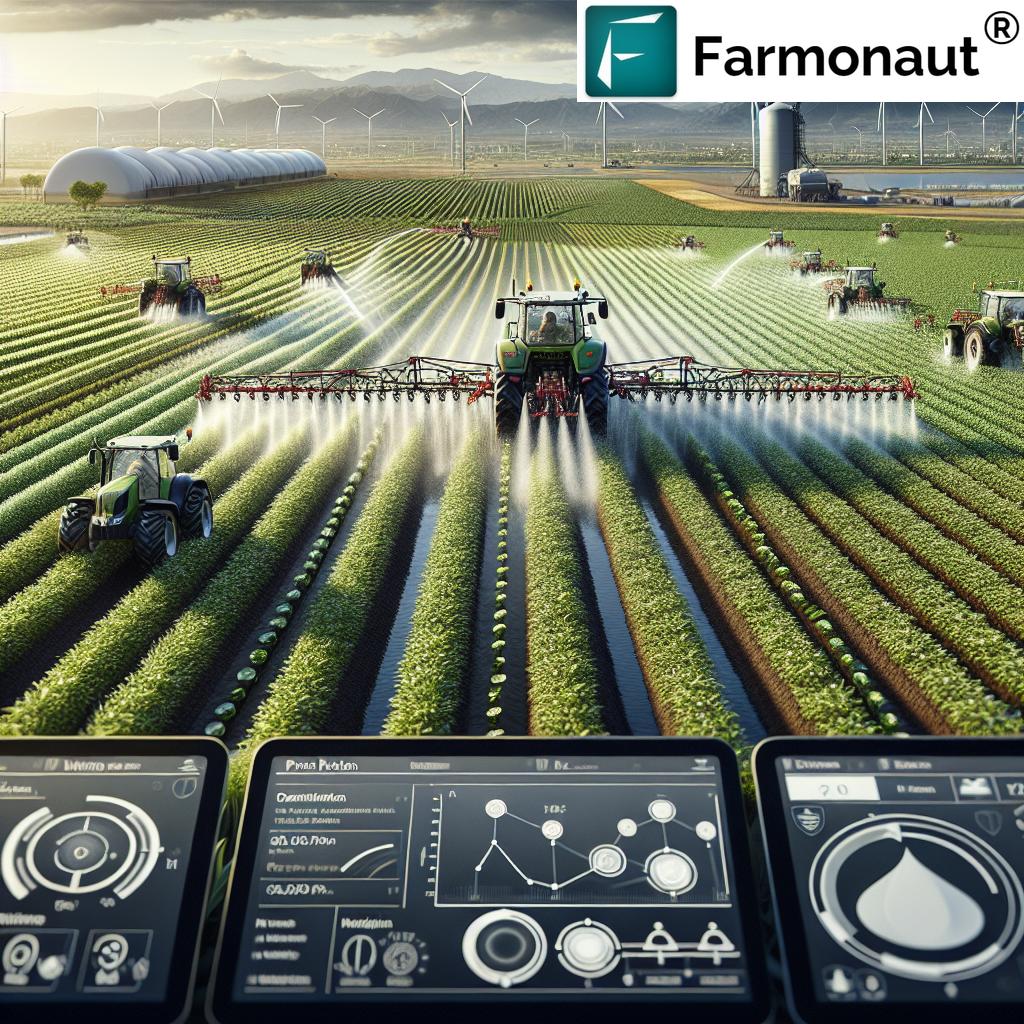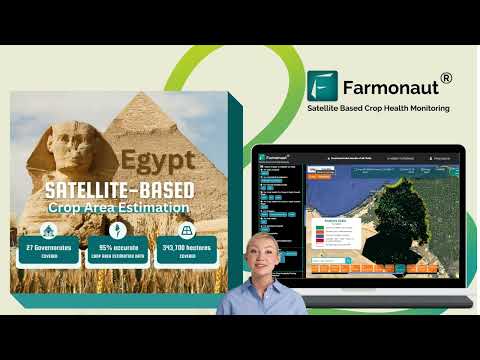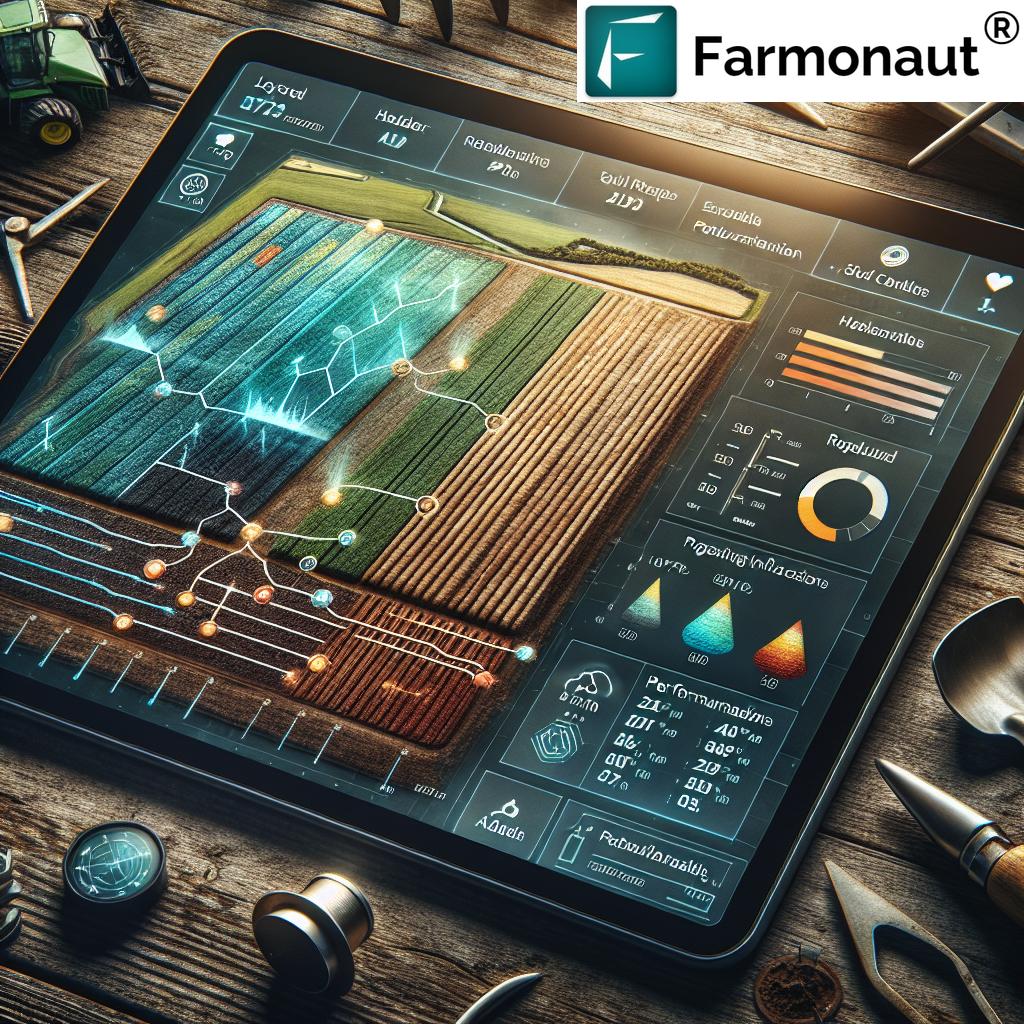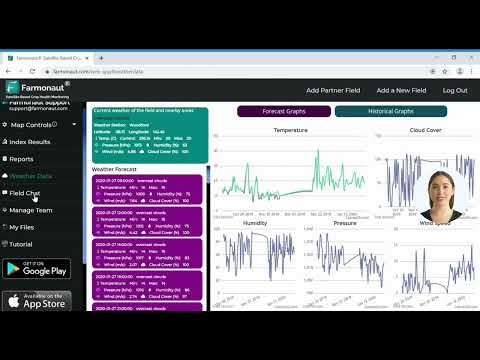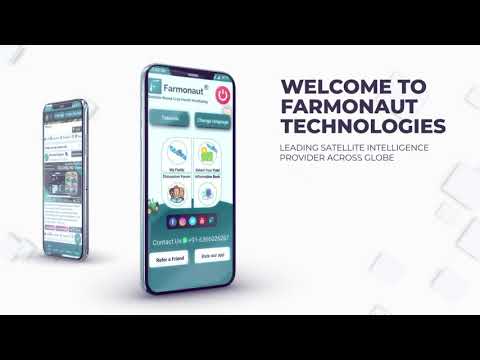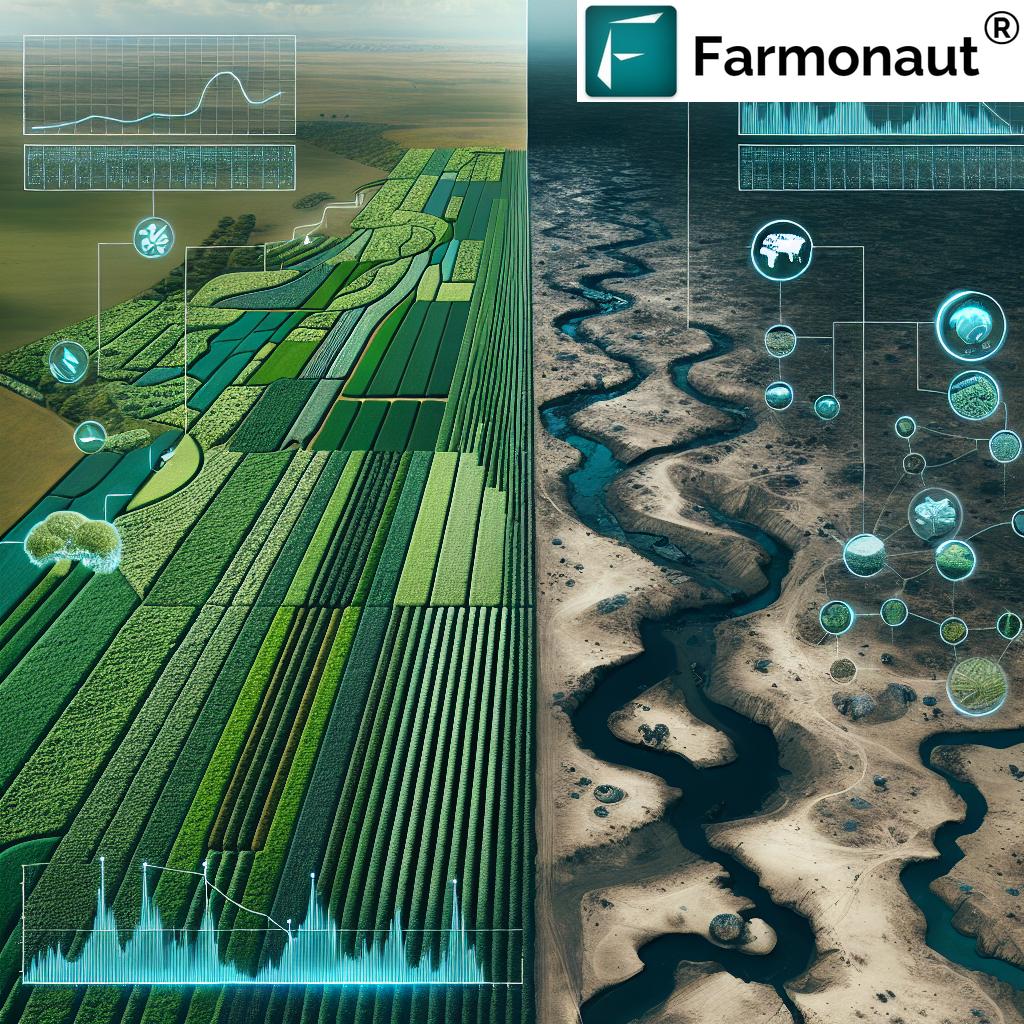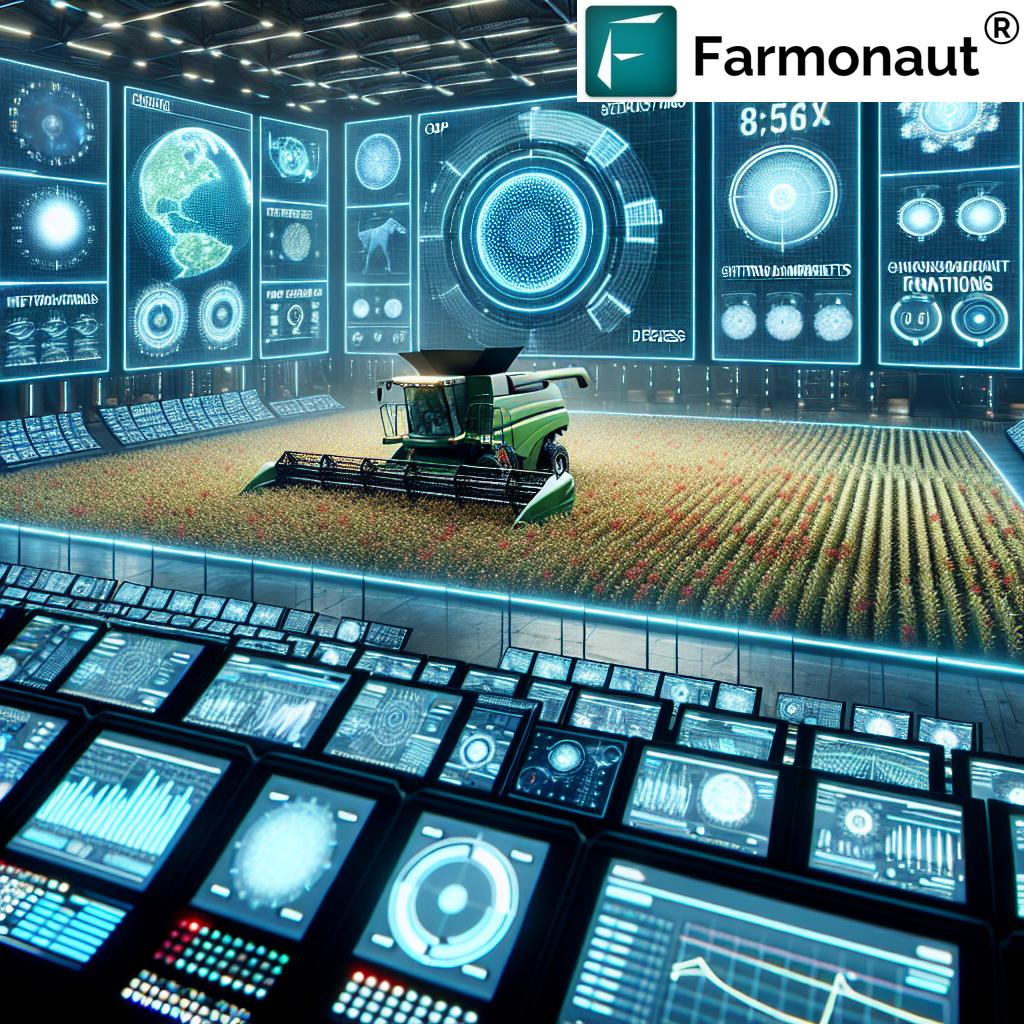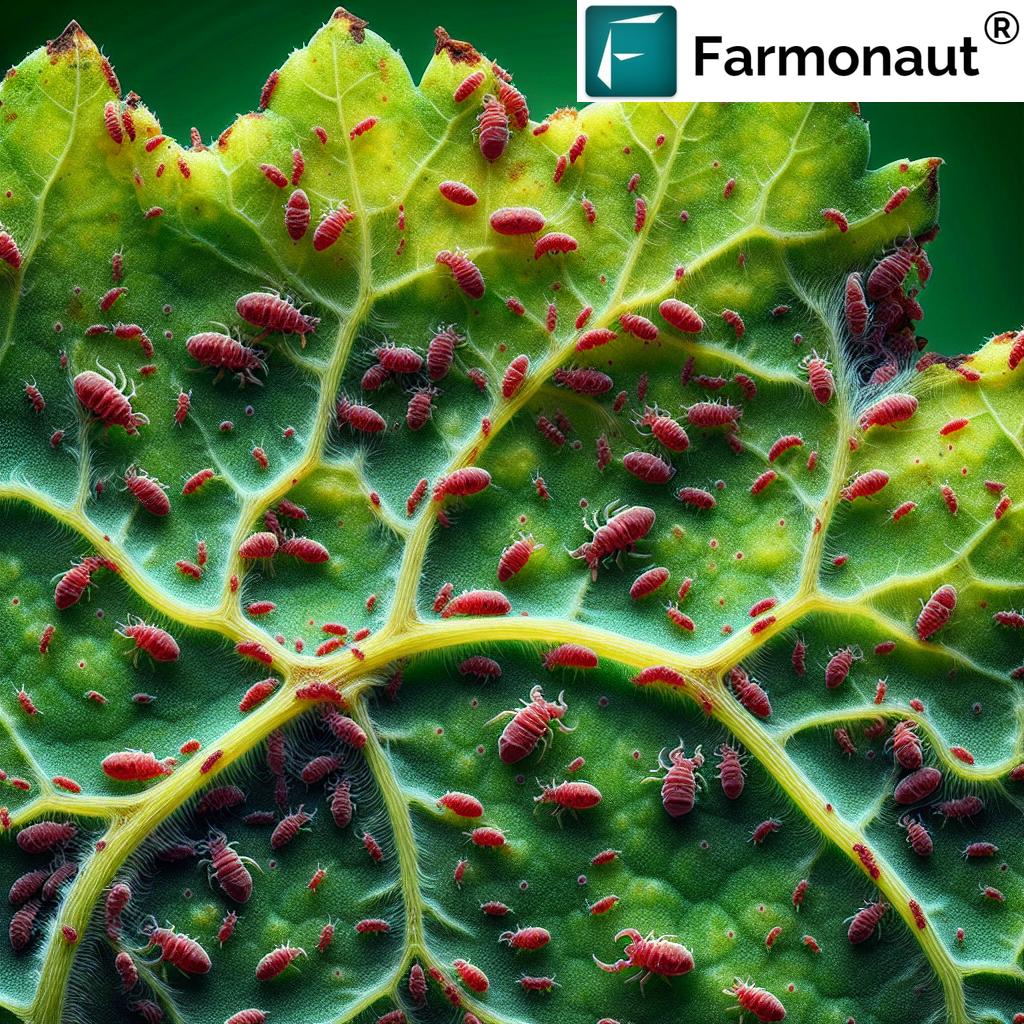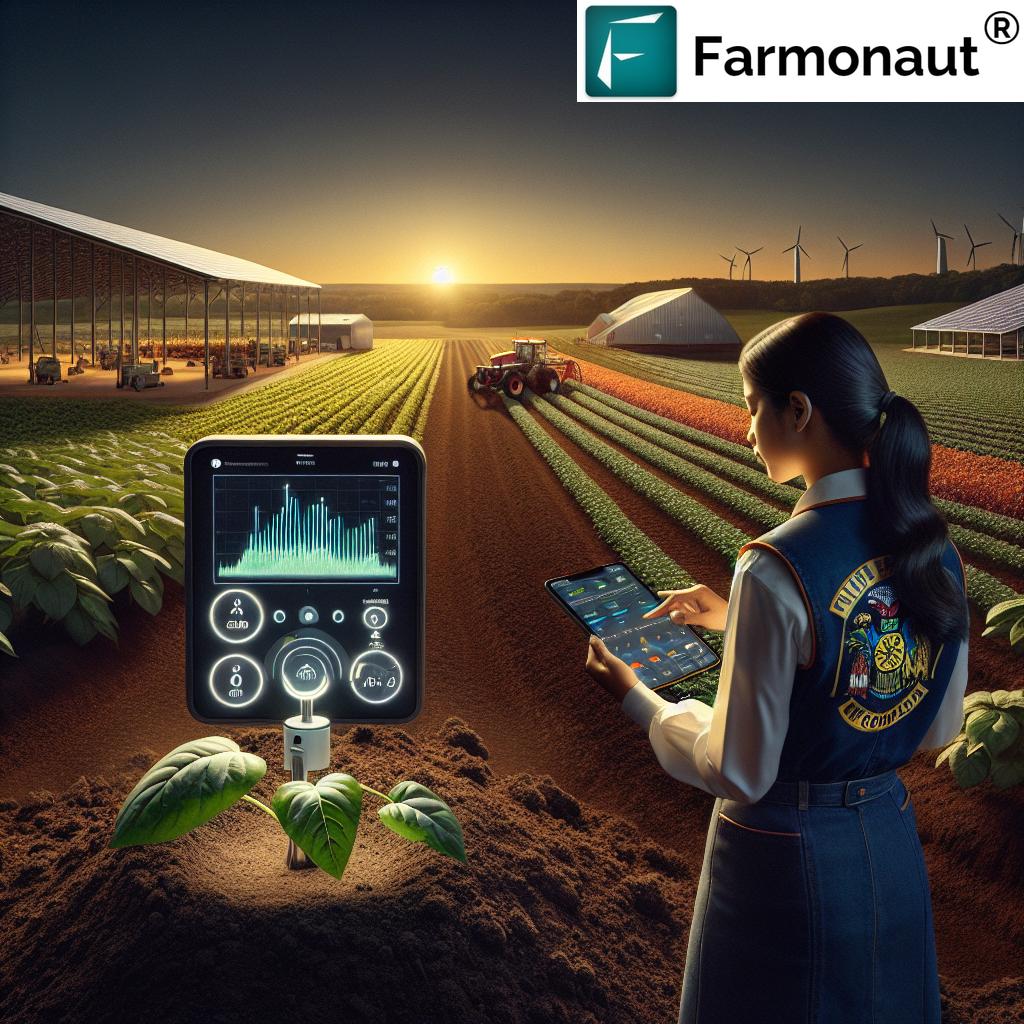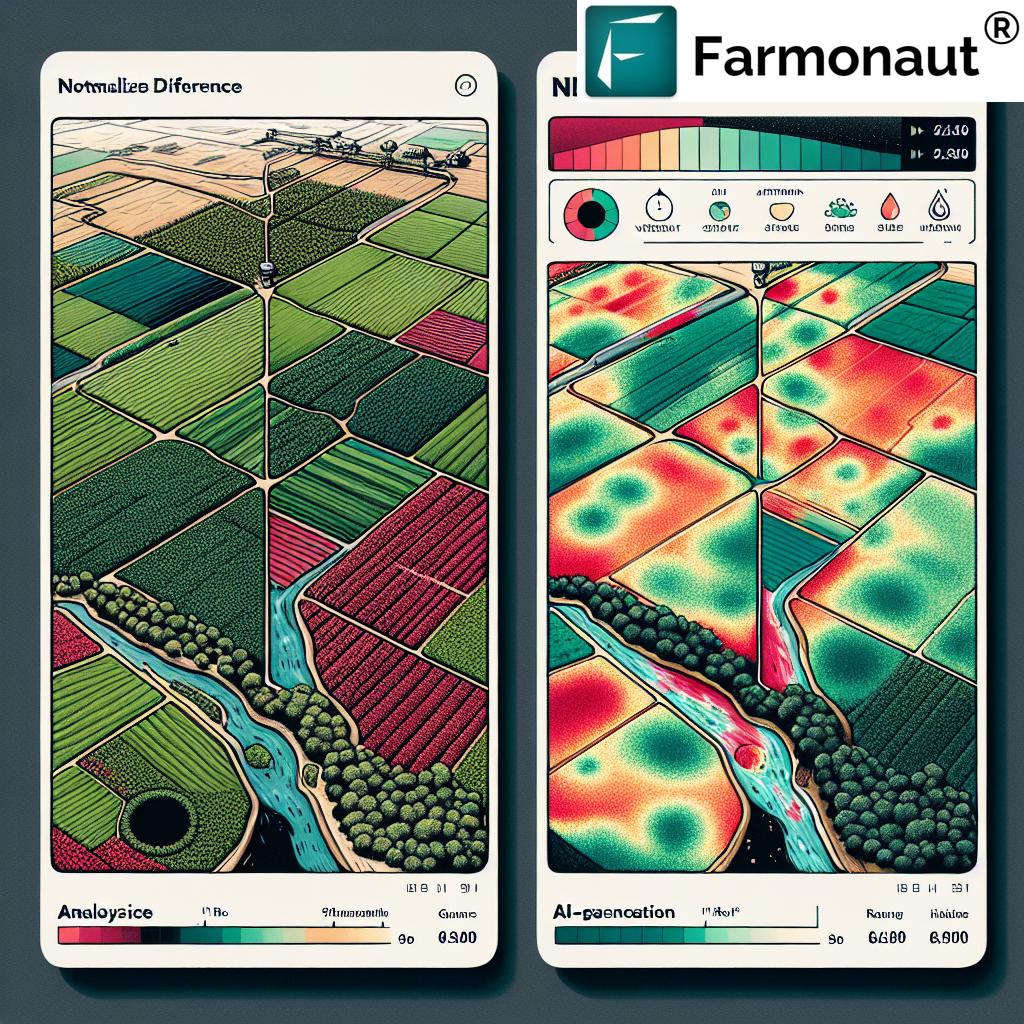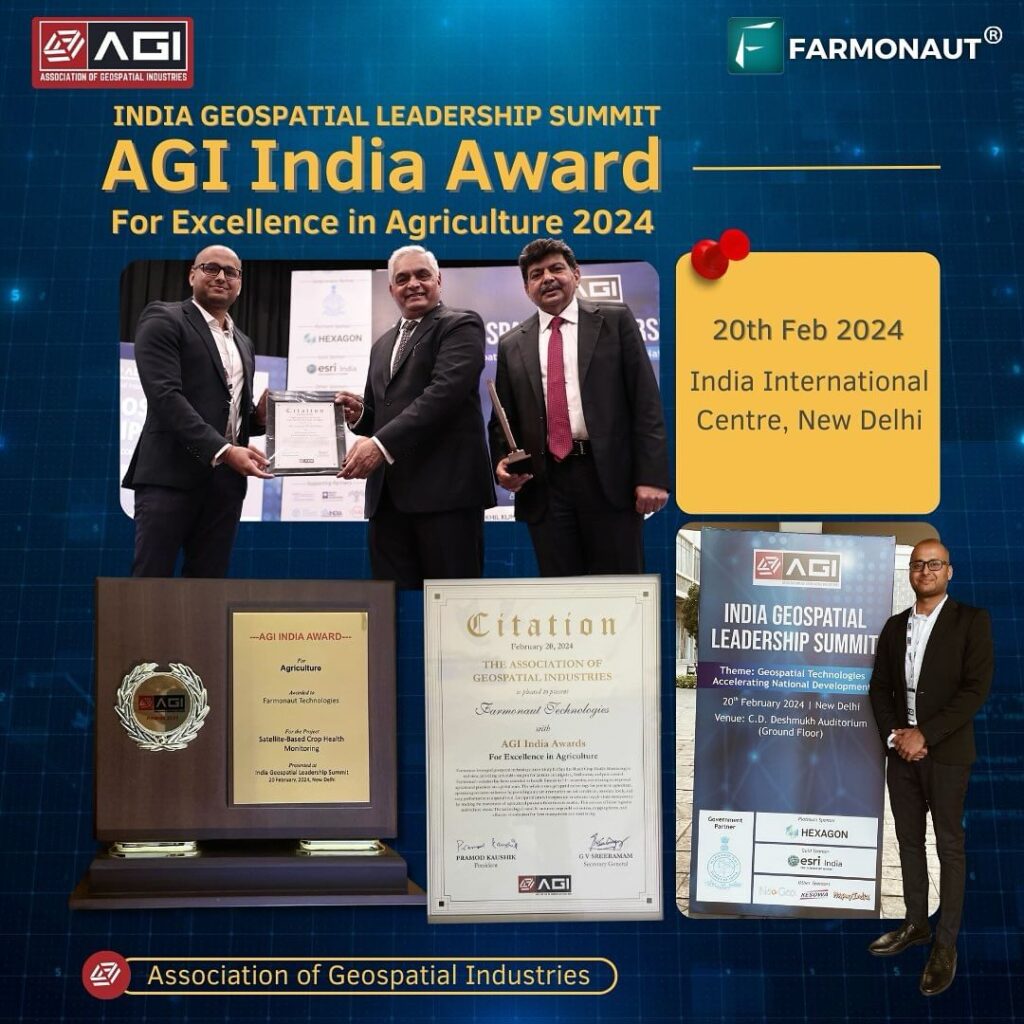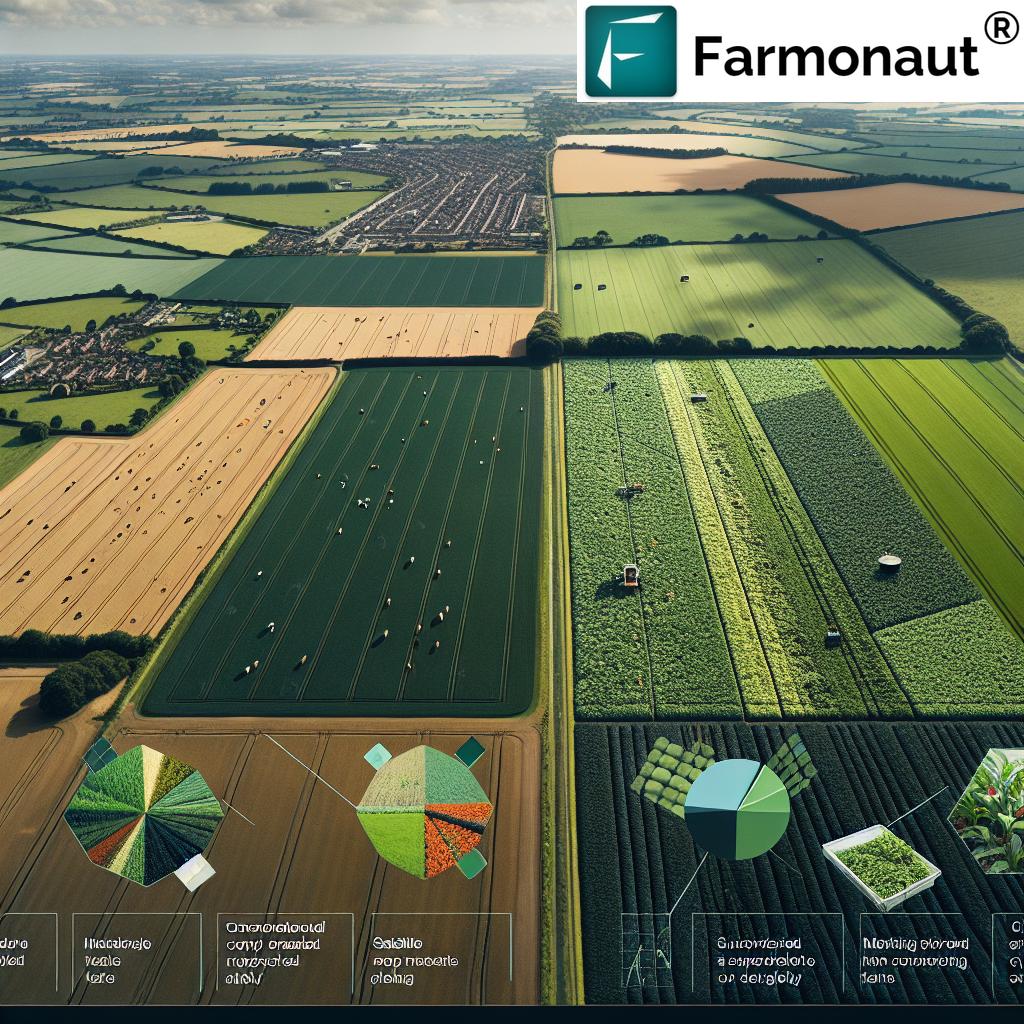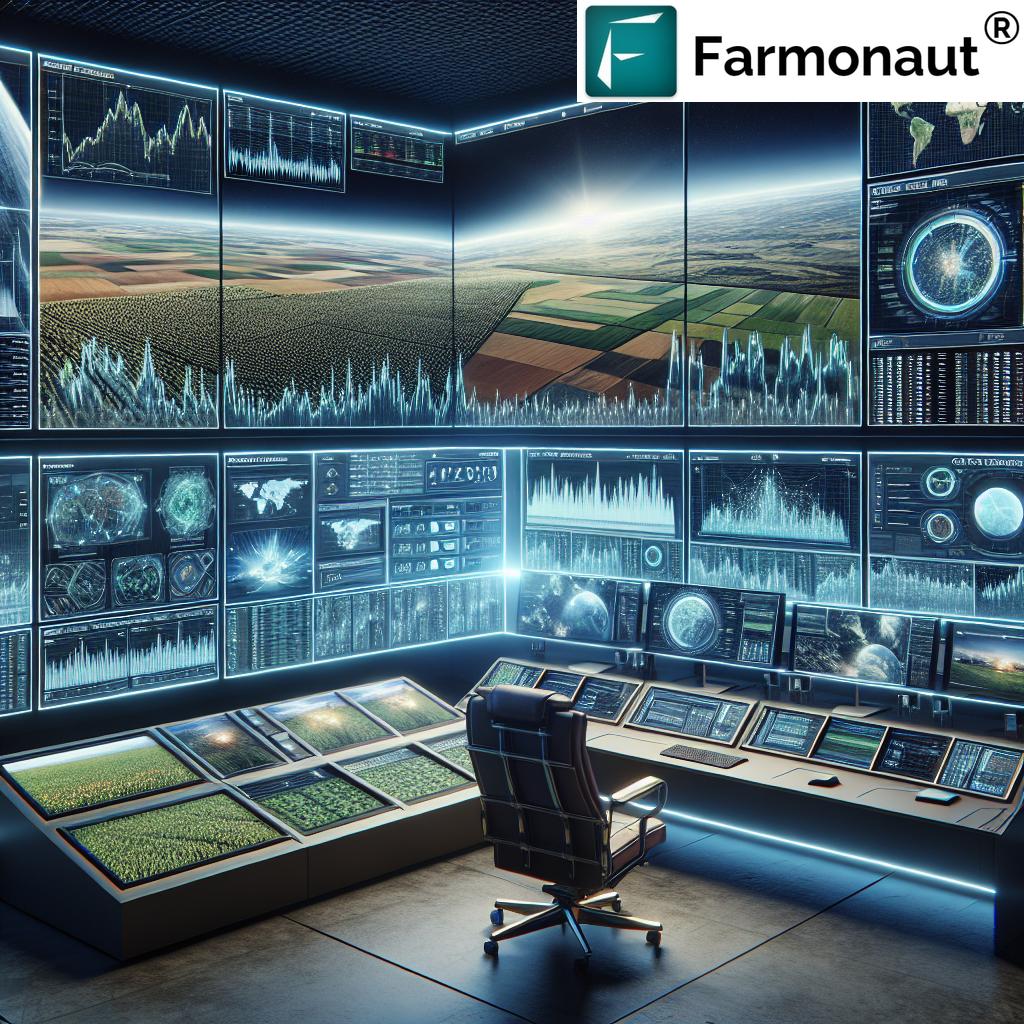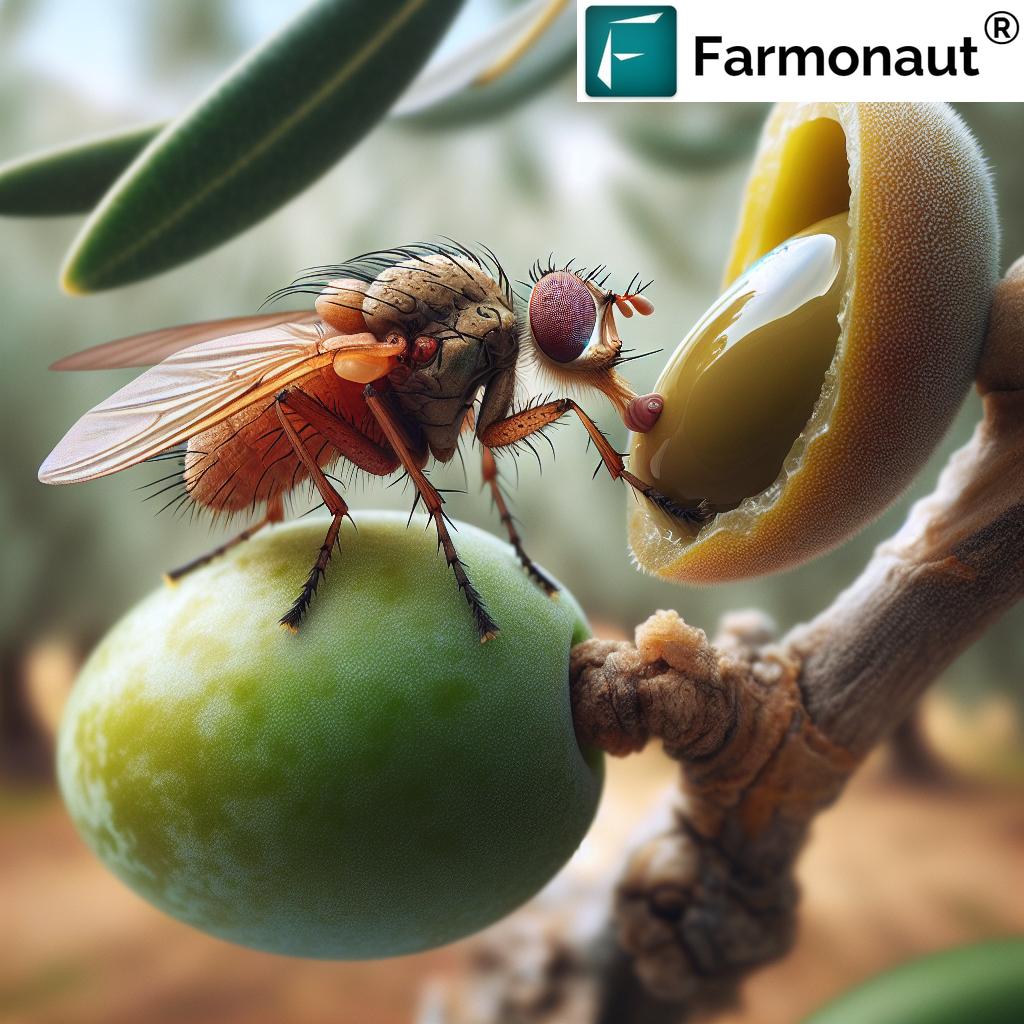Precision Ag Best Practices: 12 Proven Ways to Boost Yields
“Precision agriculture can increase crop yields by up to 20% using smart monitoring tools and soil sensors.”
Table of Contents
- Introduction
- 1. Data Collection and Management: Building the Foundation of Precision Agriculture
- 2. Variable Rate Technology (VRT): Optimizing Input Application
- 3. Precision Seeding and Planting: Uniform Crop Emergence
- 4. GPS-Guided Machinery: Maximizing Efficiency
- 5. Soil Sensors and Mapping: Real-Time Soil Insights
- 6. Crop Monitoring Technologies: Ensuring Crop Health
- 7. Smart Irrigation Systems: Precision Water Management
- 8. Yield Monitoring and Mapping: Identifying Field Variability
- 9. Equipment Maintenance and Calibration: Guaranteeing Performance
- 10. Training and Education: Empowering Farm Teams
- 11. Data Integration and Management: Unlocking the Power of Big Data
- 12. Embracing Continuous Improvement: Innovate, Adapt, Succeed
- Comparison Table: Precision Ag Practices & Their Impacts
- Farmonaut: Making Precision Agriculture Accessible
- FAQ: Precision Ag Best Practices
- Conclusion
Introduction
As global food demand rises and environmental pressures intensify, precision agriculture has emerged as an innovative approach to farming. By leveraging advanced technologies like crop monitoring tools, soil sensors, satellite data, and smart irrigation systems, we can optimize every aspect of farm management, from input allocation to field-level interventions. The result? Enhanced productivity, improved yields, lower costs, and measurable steps towards sustainability. In this comprehensive guide, we’ll uncover 12 proven precision ag best practices—from data collection and VRT to yield mapping and continuous improvement—that are transforming farms worldwide.
We’ll also highlight how Farmonaut—a global leader in affordable, satellite-based farm management—makes these best practices accessible to every farmer through web, mobile, and API-powered solutions. Whether you’re an individual grower, an agribusiness, or part of a government initiative, this guide offers actionable insights on maximizing your crop’s potential.
What Is Precision Agriculture?
Precision agriculture, sometimes called precision farming, uses data-driven technologies to optimize field-level management. Instead of treating entire fields the same, we focus on the unique characteristics of specific zones—adjusting inputs, monitoring crop performance, and making real-time decisions for each area. The result is smarter resource management, higher yield potential, and a measurable reduction of environmental impact.
- Crop monitoring tools deliver instant health readings and highlight issues before they affect yields.
- Soil sensors capture real-time data on moisture, nutrients, and temperature, supporting accurate fertigation decisions.
- Smart irrigation systems respond automatically to precise crop water needs, minimizing waste.
- Platforms like Farmonaut combine satellite imagery, AI, and blockchain for actionable recommendations, traceability, and farm-wide efficiency.
“Farms using precision ag practices report up to 30% reduction in fertilizer usage through targeted application technologies.”
1. Data Collection and Management: Building the Foundation of Precision Agriculture
At the foundation of any successful precision farming system lies accurate data collection and management. Comprehensive and reliable data about our fields, soils, and crop conditions empowers us to make informed, data-driven farming practices and decisions that directly impact yields, efficiency, and sustainability.
Advanced Tools for Data Collection
- Global Positioning Systems (GPS): Instrumental for mapping field boundaries, tracking machinery movement, and geotagging events directly to specific field locations.
- Geographic Information Systems (GIS): These platforms integrate multiple spatial datasets (soil type, elevation, cropping history) for detailed mapping and analysis.
- Remote Sensing & Satellite Imagery: Capturing everything from crop vigor and biomass to drought stress and pest damage—these technologies, especially those offered by Farmonaut, make regular monitoring at scale accessible for any crop and field size.
The real challenge is not just collecting data but transforming it into actionable insights. With scalable solutions like Farmonaut’s satellite-based crop monitoring tools, smallholders and large operations alike can ingest multispectral imagery, AI-driven advisories, and real-time weather patterns—all in a seamless app or API workflow.
Best Practices for Data Collection & Management
- Standardize data input protocols for consistency (e.g., set sensor calibration schedules).
- Leverage cloud-based platforms for data storage and shareability.
- Monitor data quality by cross-verifying with satellite, sensor, and manual scouting results.
Tip: Farmonaut’s app and [API](https://sat.farmonaut.com/api) make it effortless for farmers to collect, store, and integrate field information, crop imagery, and management records—all in one secure digital ecosystem.
2. Variable Rate Technology (VRT): Optimizing Input Application
One of the hallmark innovations of precision agriculture is Variable Rate Technology in agriculture (VRT). Instead of applying uniform rates of fertilizers, pesticides, or water across an entire field, VRT allows us to tailor input application—minimizing waste and maximizing benefit for every plant.
How VRT Works
- Sensors, satellite maps, and historic yield data divide fields into variable management zones.
- Onboard controllers and connected equipment automatically adjust input rates as machinery traverses the field.
- Prescription maps are generated via platforms like Farmonaut, using crop monitoring satellite data and AI analysis to provide optimal VRT instructions to in-field machinery.
VRT Benefits
- Reduces input costs by applying only what is necessary in each management zone
- Limits environmental impact (less chemical runoff, lower GHG emissions)
- Improves overall yields through precise resource targeting
Platforms like Farmonaut can deliver VRT-ready prescription files directly to compatible machinery, enhancing operational efficiency on every pass.
3. Precision Seeding and Planting: Uniform Crop Emergence
Optimal crop yield begins with precise seeding and planting. Precision seeders are advanced tools engineered to deliver seeds at the correct depths and spacings, ensuring that every plant gets a fair start—translating soil potential into vigorous, uniform emergence and growth.
- Automated planters equipped with GPS synchronize seeding with real-time positioning, reducing overlaps and skips.
- Data collected from previous seasons (yield mapping, soil sensors) informs optimal seeding rates for each field zone.
- Uniform stands lead to more consistent nutrient uptake, disease resistance, and higher harvest efficiency.
Platforms capable of tracking planting data, like Farmonaut, automatically log when and where each field was sown—streamlining management and enabling better year-on-year analysis.
4. GPS-Guided Machinery: Maximizing Efficiency
GPS guided farm machinery is transforming how farmers manage field operations. By equipping tractors, planters, sprayers, and harvesters with advanced GPS modules and automated steering,
we ensure precise navigation and input application—significantly reducing overlap, missed areas, and soil compaction.
- Sub-inch accuracy guidance enables perfect row alignment and uniform input distribution.
- Reduced human error and automated steering boost operational efficiency.
- Timely field operations promote better crop growth and resource utilization.
Platforms integrating GPS data—such as Farmonaut—allow us to monitor, optimize, and document entire machinery fleets for enhanced fleet management. Read more about Farmonaut Fleet Management solutions and how they reduce operational costs and improve safety for agricultural machinery.
5. Soil Sensors and Mapping: Real-Time Soil Insights
Soil is a dynamic and complex medium. Soil sensors in farming offer us direct, real-time metrics—such as moisture, temperature, and nutrient status—that enable smarter irrigation scheduling, adaptive fertilizer management, and sustainable land practices.
- Sensors placed at multiple depths collect data for specific crop root zones.
- Mapping software aggregates this sensor data to create detailed maps of field variability.
- Decision-support apps, like Farmonaut, visualize soil health attributes and recommend site-specific management strategies.
This precise understanding allows us to optimize inputs and avoid over-application, saving resources and protecting the environment.
See how Farmonaut’s satellite-based crop & soil monitoring makes these insights accessible from any mobile or web app.
6. Crop Monitoring Technologies: Ensuring Crop Health
Regular and accurate crop monitoring empowers farmers to detect issues early, quantify plant stress, and maintain a healthy, high-yielding field. Remote sensing—especially via satellites, drones, and aerial imagery—forms the backbone of modern crop surveillance.
- Multispectral imagery reveals vegetation indices (NDVI, SAVI, EVI) that point to growth anomalies and nutrient deficiencies.
- Detect pest infestations and disease outbreaks before they escalate.
- Monitor the performance of different management zones, comparing treatments and identifying best-performing practices.
Platforms like Farmonaut help us turn satellite data into actionable crop health alerts, supporting both day-to-day scouting and season-long analytics.
“Precision farming leverages advanced crop monitoring tools to enhance yields, promote environmental sustainability, and reduce input costs.”
7. Smart Irrigation Systems: Precision Water Management
Water is one of the costliest and most limiting inputs in agriculture, making smart irrigation systems essential for sustainable farming solutions. These systems combine soil moisture sensors, crop growth models, weather data, and remote control to apply water precisely where and when needed.
- Soil sensors measure moisture at key crop root depths to trigger or adjust irrigation events.
- Weather forecasts and ET (evapotranspiration) models predict plant water demand more accurately.
- Automated irrigation scheduling platforms (integrated in solutions like Farmonaut) minimize overwatering and water stress, enhancing both yield and resource efficiency.
Learn more about the benefits of smart irrigation from Farmonaut’s precision farming technologies, and how they help achieve sustainable farming solutions in both rainfed and irrigated agro-ecosystems.
Did you know? With satellite and sensor data integration, Farmonaut’s platform can notify you of abnormal dry zones and recommend timely water applications, preventing yield loss and minimizing costs.
8. Yield Monitoring and Mapping: Identifying Field Variability
Measuring the success of every field operation is at the core of precision agriculture. Yield monitoring and analysis uses onboard sensors in harvesters to record real-time data on crop output as each section of the field is harvested.
- Generate yield maps with sub-field resolution, identifying both high- and low-productivity zones.
- Link yield results to previous management zones and input rates for in-depth analysis and continuous improvement.
- Platforms such as Farmonaut enable seamless integration and visualization of yield maps for all field zones over multiple years, supporting data-driven farming practices.
These detailed maps create a feedback loop; by analyzing them alongside input records and weather patterns, we can fine-tune management strategies for subsequent seasons.
Explore the link between yield monitoring, financial outcomes, and informed decision-making by visiting our Crop Loan and Insurance page. Farmonaut leverages satellite-based verification to help farmers secure loans and insurance with confidence in their data, improving access to financial resources.
9. Equipment Maintenance and Calibration: Guaranteeing Performance
Even the most advanced precision farming technologies require regular maintenance and calibration to perform optimally. Inaccurate sensors or uncalibrated VRT machines can lead to wasted inputs, suboptimal yields, and unnecessary downtime.
- Adopt routine inspection schedules for all field monitoring, variable rate application, and harvesting equipment.
- Log equipment health data (engine stats, calibrations, repairs) digitally for analytics and preventative measures.
- Platforms like Farmonaut’s Fleet Management help track and manage routine maintenance and safety for every machine, maximizing uptime and reducing total cost of ownership.
Consistent calibration and proactive equipment maintenance are essential for ensuring that precision tools deliver accurate, reliable performance in the field.
10. Training and Education: Empowering Farm Teams
No matter how powerful the technology, true success in precision agriculture depends on people. Training and education ensure that farmers, agronomists, and workers can fully utilize and interpret advanced systems and data.
- On-site workshops: Enable hands-on experience with sensors, monitors, and machinery.
- Online training modules: Facilitate continuous learning and technology updates for diversified teams.
- Collaborative platforms: Empower the community to share field-tested techniques and results.
The Farmonaut platform offers intuitive interfaces, built-in guidance, and mobile support to help team members of any skill level access and use their resource management tools efficiently.
For government and NGO-led initiatives, Farmonaut provides scalable solutions for large-scale farm management and crop, plantation & forest advisory, supporting education and rural development projects.
11. Data Integration and Management: Unlocking the Power of Big Data
A modern farm can generate terabytes of data per season. Effective data integration and management is critical to making the most of these insights. By bringing together soil, crop, weather, input, and yield data—often from diverse sensors, monitors, and platforms—we gain the holistic, actionable view necessary for true data-driven farming practice.
- Invest in agricultural data platforms capable of handling large datasets (satellite imagery, IoT sensor feeds, digital field diaries).
- Adopt AI analytics and machine learning models (like those powering Farmonaut’s Jeevn AI Advisory) for trend identification and proactive recommendations.
- Create clear data governance protocols, ensuring security, privacy, and accessibility for all stakeholders.
Explore Farmonaut’s robust satellite API and developer docs to see how integrated, scalable data workflows can enhance every operational decision—on farm and beyond.
12. Embracing Continuous Improvement: Innovate, Adapt, Succeed
The pace of agri-tech innovation is relentless. To stay competitive, farmers must embrace an attitude of continuous improvement—evaluating new technologies, refining data collection, and adapting management practices based on seasonal results.
- Use annual yield and input mapping to refine strategies for the next season.
- Monitor new research, participate in trials, and engage with tech leaders in the sector.
- Incorporate sustainability metrics like carbon footprinting—an increasingly important measure for regulatory compliance and premium markets.
Discover how Farmonaut’s Carbon Footprinting Solution helps record, manage, and minimize farm and agribusiness emissions for true environmental stewardship.
“Implementing advanced precision agriculture systems empowers every farmer to optimize productivity, reduce costs, and promote environmental sustainability, season after season.”
Comparison Table: Precision Ag Practices & Their Estimated Impacts
| Best Practice / Technology | Est. Yield Increase (%) | Cost Efficiency Score (1-5) | Sustainability Benefit | Required Technology | Level of Adoption |
|---|---|---|---|---|---|
| Data Collection & Management | 5-10% | 5 | Essential for all modern sustainable farming | GPS, GIS, data platforms | High |
| Variable Rate Technology (VRT) | 7-15% | 4 | Reduces waste, chemical runoff | VRT-enabled equipment, digital maps | Medium |
| Precision Seeding and Planting | 4-10% | 5 | Improved establishment; less wastage | GPS seeders, planters | High |
| GPS-Guided Machinery | 3-7% | 4 | Reduces soil compaction, efficient operations | RTK GPS, auto-steer systems | High |
| Soil Sensors and Mapping | 6-12% | 4 | Efficient water/input use | Soil sensors, mapping software | Medium |
| Crop Monitoring Tools | 8-20% | 5 | Early detection, prevents loss | Satellites, drones, analytics platforms | Medium |
| Smart Irrigation Systems | 7-15% | 4 | Saves water, reduces cost | Sensors, IoT, automation | Medium |
| Yield Monitoring & Mapping | 5-12% | 5 | Enables continuous improvement | Yield monitors, mapping tools | Medium |
| Equipment Maintenance | 2-5% | 5 | Maximizes reliability, reduces waste | Digital logs, calibration kits | High |
| Training & Education | 3-7% | 5 | Ensures correct implementation | Learning platforms, support teams | Medium |
| Data Integration & Management | 4-11% | 4 | Holistic decisions for sustainability | Data lakes, APIs, analytics software | Medium |
| Continuous Improvement | 5-10% | 5 | Adapts to new challenges, tech | KPIs, sustainability metrics | Medium |
Farmonaut: Making Precision Agriculture Accessible and Affordable
With the rapid advancement of precision farming technologies, access and affordability remain key barriers for many farmers. Farmonaut addresses this challenge by delivering advanced, satellite-based farm management and resource management tools through user-friendly apps, web portals, and APIs—at a price point accessible to smallholders and large-scale producers alike.
Key Features & Solutions
- Satellite-Based Crop Health Monitoring: Accurate, real-time metrics including NDVI, soil moisture, and crop vigor via Farmonaut’s apps and platforms.
- AI-based Advisory (Jeevn AI): Personalized recommendations and action plans—automatically delivered based on crop stage, weather, and field status.
- Blockchain Traceability: Enhance product transparency from farm to consumer. Learn about Farmonaut’s Product Traceability for supply chain authentication.
- Fleet & Resource Management: Track, optimize, and maintain every vehicle and tool with digital fleet management solutions.
- Carbon Footprinting: Monitor, record, and reduce your agricultural carbon emissions with Farmonaut’s carbon tracking solutions.
- Scalability: Modular design suits both individual growers and government-scale operations, supporting everyone from remote family fields to national policy programs.
Access the platform anywhere—on Android, iOS, or the web—and benefit from cost-effective, cutting-edge decision support for every farm operation.
Ready to Experience Precision Ag? Try Farmonaut Now.
Frequently Asked Questions: Precision Ag Best Practices
What is precision agriculture and why is it important?
Precision agriculture is a technology-driven approach to crop farming that uses advanced tools, such as GPS, satellite imagery, sensors, and data analytics, to optimize field-level management. It allows us to maximize yields, use resources more efficiently, and reduce environmental impact, addressing the challenges of growing food demand and climate change.
How do soil sensors improve farming decisions?
Soil sensors provide real-time data on soil moisture, temperature, and nutrient levels. This information enables farmers to adjust irrigation and fertilizer application precisely to plant needs, reducing waste and supporting higher yields.
Are precision ag solutions like Farmonaut affordable for small farmers?
Yes, platforms such as Farmonaut focus on affordability and scalability, using satellite data and cloud-based solutions instead of expensive hardware. This enables small to medium-sized farms to benefit from technologies previously reserved for large agribusinesses.
What role does yield mapping play in continuous improvement?
Yield mapping analyzes harvest outcomes by sub-field zones, providing detailed feedback on which management strategies worked best. This enables data-driven adjustments to seeding, input application, and field interventions for future seasons.
Can precision farming help with sustainability goals like carbon footprint reduction?
Absolutely. By optimizing resource use and tracking emissions with specialized tools like Farmonaut’s carbon footprinting, farms can minimize their environmental impact and meet regulatory or market-driven sustainability targets.
Where can I access Farmonaut’s solutions and developer resources?
You can access Farmonaut on web, Android, or iOS. For integration, see our API and API developer docs.
Conclusion
Precision agriculture is not just a trend—it’s the future of efficient, sustainable, and highly productive farming. By implementing these 12 proven best practices—from robust data collection and variable rate technology to smart irrigation systems and continuous improvement—we can consistently maximize yields, save costs, and steward our land for future generations.
With platforms like Farmonaut making access to advanced crop monitoring tools, soil sensors, and AI-driven analytics affordable and intuitive, there’s never been a better time to embrace data-driven farming at every scale. Try Farmonaut today to experience the benefits firsthand—and join a new era in agriculture.
Visit the Farmonaut Web App
|
Explore Fleet Management
|
Reduce Your Carbon Footprint
|
Crop Loan and Insurance Solutions
|
Ensure Product Traceability
Implement precision. Empower your farm. Secure our food future—one smart decision at a time.


